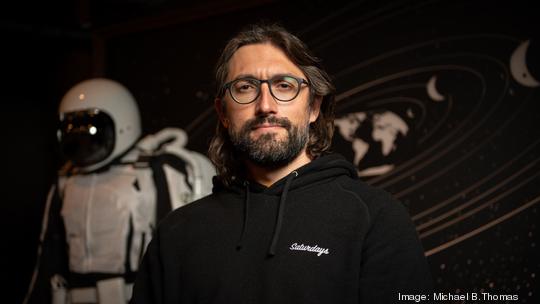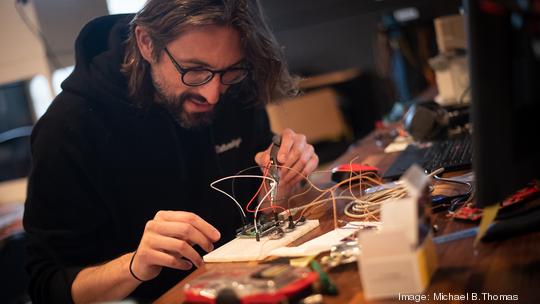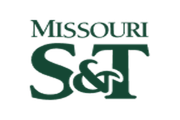
Impossible feats rarely remain that way forever — they just require the right person with the right perspective and perseverance. Throughout his life, when faced with the seemingly impossible, Pablo Sobron has pushed through and made it to the other side.
It was a lesson he learned at an early age. As a kid growing up in Spain in the 1980s, he remembers dreaming of dedicating his life to space missions and exploration. There was only one problem: He was too tall to be an astronaut.
“That didn’t stop me from dreaming about space, exploring, and understanding those things in the sky — and asking, ‘Can we get there and learn more?’” he recalls.
Sobron eventually made it to outer space, but not as he imagined all those years ago — instead, it’s his technology that’s landed. As the founder, CEO and “sensing wizard” of St. Louis-based Impossible Sensing, Sobron oversees a team of scientists and engineers developing optical sensors to explore and study deep space and the deep sea. In just a few years, Sobron has grown his startup to a staff of 13 full-time scientists, engineers and creatives.
Impossible Sensing gained widespread attention for its work with the NASA rover Perseverance, which touched down on Mars on February 18, 2021, with two pieces of Impossible equipment in tow. Exploring the red planet and beyond is only part of Impossible’s focus. Sobron is also creating technology to study the deep sea, considered the “final frontier” on earth.
For Sobron, the work is fulfilling a childhood dream, but also a journey he began some 17 years ago while studying at the University of Valladolid in Spain. In 2004, the NASA Opportunity rover discovered a mineral that can only form in the presence of water on Mars. Sobron was fascinated by the discovery and became determined to, “contribute something to the search for life in the universe.”

That passion led him to pursue his doctoral degree in physics, which was entirely research-based and included intensive on-site field research in the Jaroso Ravine. And in doing that research, he realized there was a need for new technology.
“It was a very frustrating experience where I could only do very tangential proxy science with those samples back in the lab,” he continues. “I decided that I was going to have to bring the lab to the field to avoid all these problems. But in 2005 and 2006 there were no tools to do what I wanted to do in the field.”
Through his various studies and experiences, Sobron befriended scientists at NASA and across the U.S., including Professor Alian Wang at Washington University in St. Louis. In 2008, Sobron accepted a postdoctoral research associate position at Washington University. He was building an impressive career and doing work he loved, but Sobron still felt something was missing. By 2016, the idea for Impossible Sensing was percolating.
When considering where to found his startup, Sobron had plenty of options, including strong networks in Silicon Valley and with the European Space Agency, Canadian Space Agency and NASA — yet he chose to return to St. Louis, where the affordable cost of living and connection to Washington University’s NASA partnership could help anchor Impossible.

“Of all the places in the world that I lived, St. Louis offered me the most diverse array of characters in the sense of seeing different ways of life and the world,” Sobron says. “The arts and creativity we’ve found here, I see as a really key requirement for us to grow, but also the connections we’ve built with the community, like at Washington University and incubators like T-REX, Nebula and Cortex Innovation Community. I’m very committed to staying here because of the people and our personal connections in the community that will really make us succeed as a company.”
Sobron is excited to continue investing in St. Louis and hopes to make the city a hub for space exploration and innovation. If that sounds unlikely right now, just remember — impossible feats rarely remain that way forever.
“What we’re trying to do next is really expand and become a magnet, an attractor, for people from outside St. Louis, from both coasts and other places, to really develop a key space exploration hub here in St. Louis under our Impossible mission,” Sobron says. “We want to bring new talent and bring the city new faces and new ambassadors for St. Louis toward the world.”
STLMade, an initiative of Greater St. Louis, Inc., shines a light on people and ideas that are moving the region forward and contributing to make this a place where you can start something, you can get the support to stand out, and you can stay and make St. Louis yours.



